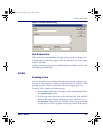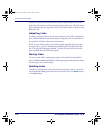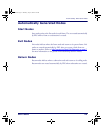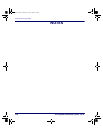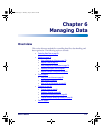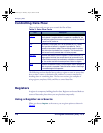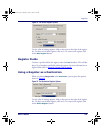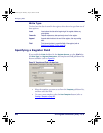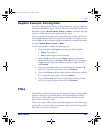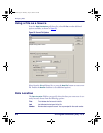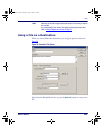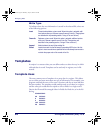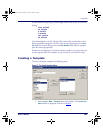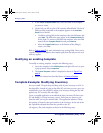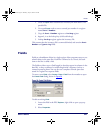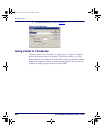
Files
User’s Guide 81
Register Example: Parsing Data
You own a catalog business. When you ship packages out, you scan a label that
includes the destination region. The first character of each label identifies this
destination region as North, West, South, or East. Customize the appli-
cation so it divides data into four separate files by region.
Create a template that separates the scanned data into two fields, the first one
for the
region character and the second one for the rest. The template exam-
ines the
region field to determine the file into which the scanned data should
be copied: North, West, South, or East.
To create this template, complete the following steps:
1. Create a template called
Region containing the following fields:
•
Region, fixed length:1
•
Rest, variable length, comma delimited
2. Create a
Verify node that uses the Region template to determine
whether the character in the
Region field is N and, if it is, proceeds to
a
Copy node that copies the contents of the input register to a file
called North.
3. Create a second
Verify node that checks whether the character is W
and, if it is, copies the input code to a file called West.
4. Create a third
Verify node that checks whether the character is S and,
if it is, copies the input code to a file called South.
5. Create a fourth
Verify node that checks whether the character is E
and, if it is, copies the input code to a file called East.
Files
Portable files are used to store data that has been either input via the portable’s
scanner or data keys or downloaded from a PC file through the serial port.
Each entry in a file is called a record, and the records in each file are num-
bered, with 1 as the first record.
There are two types of file settings in portable dialog boxes. Source file settings
specify a file or record in a file to be read from. Destination file settings deter-
mine a file or record to be written to.
2342.book Page 81 Thursday, July 22, 2004 8:35 AM



